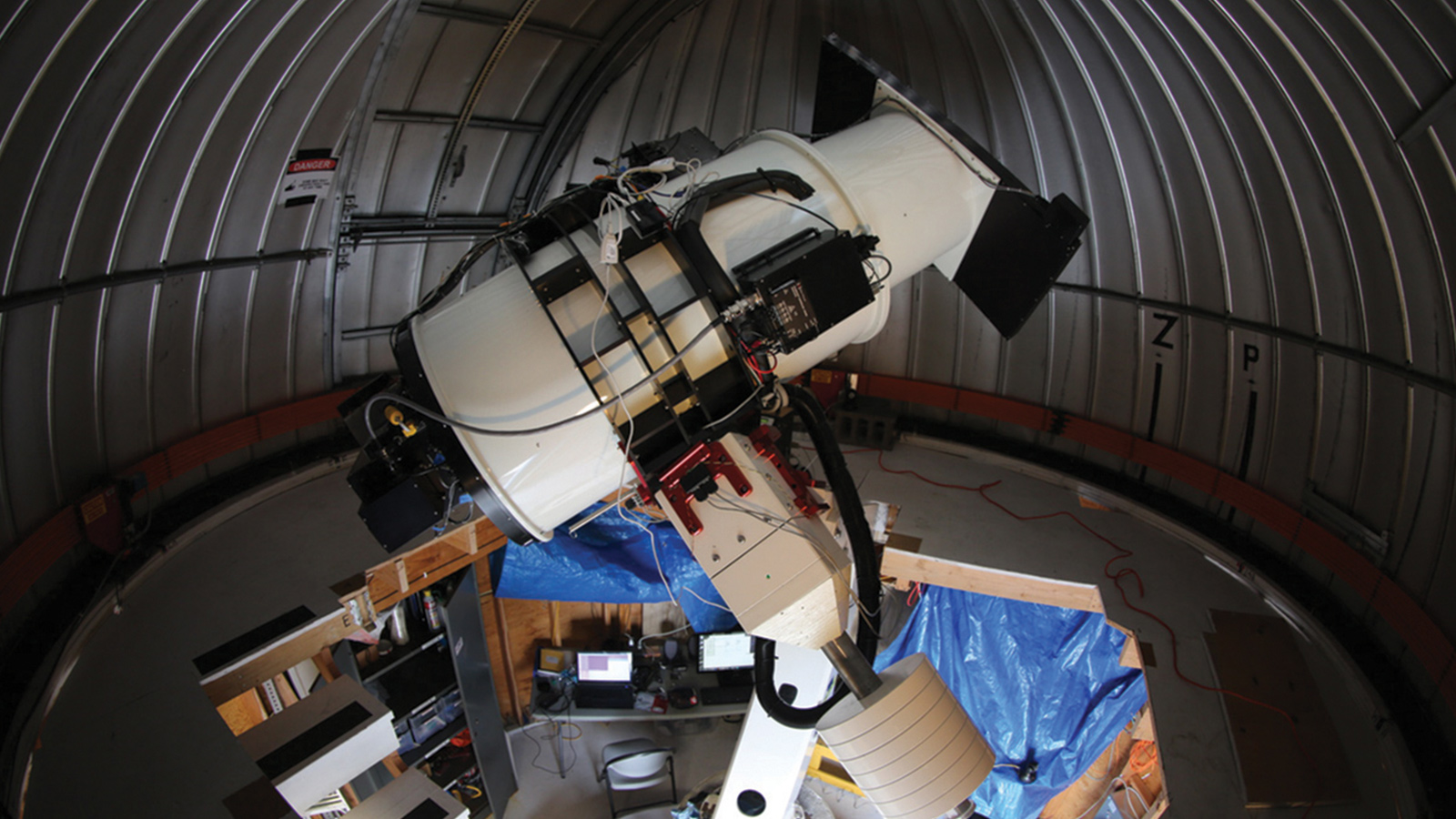DECEMBER 27, 1984: A team of American meteorite hunters finds the meteorite ALH 84001 in the Allan Hills region of Antarctica. This meteorite was found to have come from Mars, and in 1996 a team led by NASA scientist David McKay reported the presence of possible “microfossils” and other evidence of potential biological activity within it. This is the subject of a previous “Special Topics” presentation.
DECEMBER 27, 2020: The main-belt asteroid (41) Daphne (around which a small moon, named Peneius, was discovered in 2008) will occult the 7th-magnitude star HD 49385 in Monoceros. The predicted path of the occultation crosses Oregon, the northern Pacific Ocean, the southern part of the island of Sakhalin, far southeastern Russia, far northeastern China, northern Mongolia, and east-central Kazakhstan.
DECEMBER 28, 1969: Amateur astronomer John Bennett in South Africa discovers the comet now known as Comet Bennett 1969i. Around the time of its perihelion passage in March 1970, it became a bright naked-eye comet and it is the first “Great Comet” that I ever observed; it is a previous “Comet of the Week.”
DECEMBER 28, 1973: Comet Kohoutek 1973f passes through perihelion at a heliocentric distance of 0.142 AU. Although it did not become the “Great Comet” that had been originally expected, it was nevertheless a moderately conspicuous naked-eye object and was an important comet scientifically. It is this week’s “Comet of the Week.”
DECEMBER 28, 2019: The ATLAS survey in Hawaii discovers the comet now known as Comet ATLAS C/2019 Y4. It was found to be traveling in the same basic orbit as the Great Comet of 1844 and is likely a trailing fragment of that object; unfortunately, it disintegrated as it approached perihelion this past May and did not become bright. It is a previous “Comet of the Week.”

DECEMBER 29, 2020: The Apollo-type asteroid (162173) Ryugu, the destination of JAXA’s Hayabusa2 mission (discussed in a recent “Special Topics” presentation, and having successfully delivered samples to Earth earlier this month), will pass 0.061 AU from Earth. It is currently traveling south-southeastward through the constellation Phoenix and will enter southern circumpolar skies in early January 2021; it is a rather faint object of 17th magnitude.
DECEMBER 31, 2018: Having arrived at the near-Earth asteroid (101955) Bennu earlier that month, NASA’s OSIRIS-REx mission goes into orbit around that object. OSIRIS-REx collected soil samples from Bennu this past October, and is expected to depart this coming March for a return to Earth in September 2023. The OSIRIS-REx mission is discussed in a previous “Special Topics” presentation.
DECEMBER 31, 2020: The main-belt asteroid (76312) 2000 ER138 will occult the 6th-magnitude star HD 45215 in Monoceros. The predicted path of the occultation crosses the Japanese island of Kyushu, the southern tip of South Korea, central northeastern China, southwestern Mongolia, northeastern Kazakhstan, eastern Russia, southern Finland, and central Sweden.
More from Week 53:
Comet of the Week Special Topic Free PDF Download Glossary
Ice and Stone 2020 Home Page


